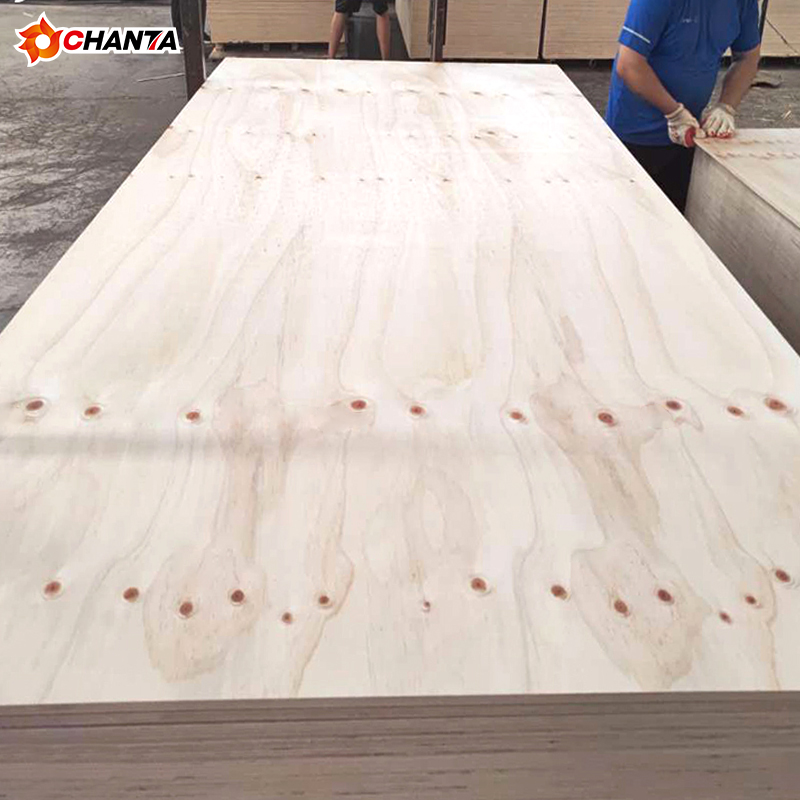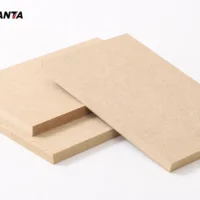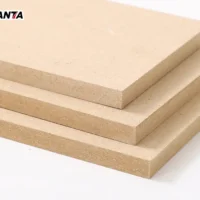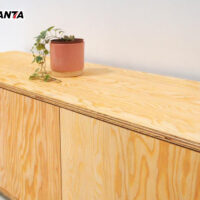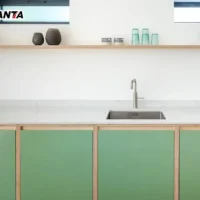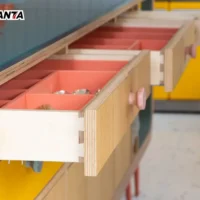When choosing between plywood and solid wood for interiors, understanding their differences is essential. Both materials have unique strengths and drawbacks. Here’s a breakdown of plywood vs. solid wood from the perspectives of cost, performance, and environmental impact.
Cost Comparison
First, let’s look at cost. Generally, plywood is more affordable than solid wood, especially for larger projects. Plywood’s layered construction uses less wood, reducing costs without sacrificing functionality. Because of this, plywood is popular in budget-friendly renovations and large-scale furniture production.
In contrast, solid wood is usually more expensive due to its premium quality and natural appearance. The higher price reflects its durability and unique wood grain, which can add luxury to spaces. Solid wood is often chosen for high-end furniture, cabinets, and decorative elements where budget is less restrictive.
Performance and Durability
Plywood and solid wood differ significantly in terms of performance. Plywood is known for its stability; it resists warping and cracking, making it ideal for humid conditions. This makes a good choice for areas like bathrooms, kitchens, or basements, where moisture levels fluctuate.
Solid wood, however, offers superior strength and durability when conditions are stable. It is highly resilient and can last for generations if properly cared for. Unlike plywood, solid wood can be easily sanded and refinished, giving it a longer lifespan in low-humidity areas. However, solid wood may warp or crack in fluctuating moisture levels, so it’s best suited to dry environments.
Environmental Impact
Environmental impact is a key consideration for many homeowners. Plywood, crafted from thin layers of wood veneers, uses fewer natural resources. Many plywood products also use eco-friendly, formaldehyde-free glues, reducing harmful emissions.
Solid wood, being natural, is biodegradable and has a low environmental impact, especially when sourced responsibly. However, since it requires more raw material, solid wood can contribute to deforestation if not sourced sustainably. For environmentally-conscious projects, both plywood with certified green adhesives and sustainably harvested solid wood are good options.
Visual Appeal
Both plywood and solid wood bring unique aesthetics to interiors. , though manufactured, often comes with a veneer layer that resembles real wood grain. This provides a natural look at a lower cost. Plywood also offers versatility, as it can be easily painted, laminated, or stained to match various interior styles.
Solid wood, however, has unmatched authenticity and beauty. Its unique grain patterns and textures add warmth and character to spaces. For visible areas like dining tables, cabinets, or flooring, solid wood is often the preferred choice. Additionally, solid wood ages beautifully, enhancing its appeal over time.
Best Applications for Each Material
Plywood is excellent for applications that require durability on a budget. It works well in cabinets, shelving, and paneling, especially in areas with high humidity. For DIY projects or modern interiors, plywood’s adaptability is a major advantage.
Solid wood, meanwhile, is best for furniture pieces and decorative items where quality and longevity are priorities. It’s ideal for traditional or rustic designs and is often used in family heirlooms or statement pieces like dining tables.
Conclusion
Choosing between plywood and solid wood depends on your specific needs, budget, and aesthetic goals. Plywood offers cost-effectiveness, moisture resistance, and versatility, making it suitable for a variety of uses. Solid wood, while pricier, provides unmatched beauty, durability, and the potential to last a lifetime. For budget-conscious or high-moisture projects, plywood is often ideal. For timeless elegance and durability, solid wood remains a top choice.














